
Fujifilm X-T1 compact system camera
An interchangeable lens camera with manual dials and switches that can give you total control over your photography
Pros
- Large and clear EVF
- Tactile control
- Excellent picture quality
- Weatherproof body
Cons
- Price is high
- Wi-Fi function isn't great
Bottom Line
The Fujifilm X-T1 stands out in a sea of compact system cameras, mainly due to its tactile exposure controls and excellent electronic viewfinder. It's expensive, but nevertheless an interesting proposition if you're after a small, high-performance camera that gives you total control of your shots.
-
Price
$ 1,999.00 (AUD)
On the surface, the Fujifilm X-T1 is an interchangeable lens camera (or compact system camera) that’s designed with professional users and hands-on types in mind. It’s not the usual auto-mode fare that you might be used to seeing from mainstream cameras. Instead, it’s a manual camera with tactile controls that will let you take complete ownership over each exposure. It can be intimidating to use at first, but once you figure out how to dance with the dials and choose the right settings, it will offer a rewarding photo-taking experience.
The dials, they do something
While it’s a camera that’s aimed more towards pros and knowledgeable enthusiasts, we think it’s also the type of camera that could appeal to those of you who are looking to make your way up the camera chain and advance your skills. The tactile controls can be a big help when you want to learn the ins and outs of ISO, shutter, and aperture values and how they all work to affect a picture. You don’t have to look at the LCD screen and consult a menu to change most settings; you can simply look at the way the dials are set and move them.
Indeed, if you’re coming from a compact camera environment and want to learn more about how to control a camera, the Fujifilm X-T1 is a great candidate for you, but that’s assuming you can afford it. That’s the major hurdle with this camera. It costs almost $2000 when you buy the 18-55mm lens kit option, and the investment in glass after that will also be substantial (the camera requires suitable lenses that can fit on its X Mount). Many will argue that you shouldn’t go for a camera like this when entry- and mid-level Canon or Nikon digital SLRs can be bought for less money and with a greater choice of lenses.
While that’s a valid argument from a cost perspective alone, the draw of this camera is the different experience that it provides compared to those cameras due to the inclusion of all the physical dials. There’s just something about being able to ‘dial in’ to a specific shutter speed and ISO value that adds to the overall photo-taking experience. The other thing is that it’s smaller than a typical digital SLR, and therefore a lot more comfortable to sling around your shoulder or pack in your bag than a typical digital SLR (depending on the lens that's attached and whether the flash is present or not).

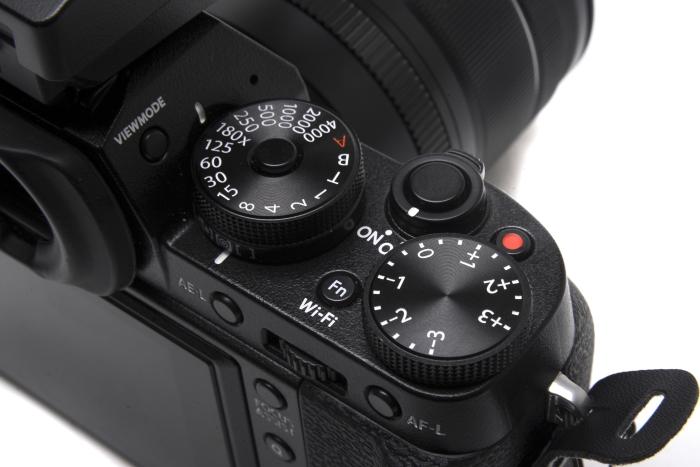
Across the top of the camera is where you will find the majority of the controls. These include dials for ISO speed (up to 6400), shutter speed (up to 1/4000), and exposure compensation (+/-3), and there are further switches that can be used to select the shooting mode and the metering mode. You do also get index finger and thumb control dials, which can override settings like the shutter speed, and these are most useful when you want to change settings without taking your eye off the viewfinder.
A well-balanced overall product
At this point, we'll also say that the Fujifilm's menu system is among the cleanest we've seen. While the main focus is on the tactile controls, there is a quick menu that can be used to change focus mode, white balance, image size and quality, colour and sharpness settings, as well as allowing you to switch between custom settings that you've configured. It's from here that the timer settings can also be quickly accessed. The main menu is straightforward, too, and it's from there that you can customise many of the body's buttons and dials to suit your needs.
We tested the Fujifilm X-T1 with a Fujinon XF 18-55mm zoom lens, which has its own control ring so that you can change aperture directly on the lens instead of the camera body. The design of this lens goes a little against the rest of the camera body, mainly because there are no f-stop numbers for you to look at while you rotate the dial — you have to look at the screen or through the viewfinder to see the value that’s been selected. Alternatively, you can switch the lens to ‘A’ mode (an auto aperture mode), which will allow the camera to select an appropriate aperture value automatically.
The body of the camera overall feels well balanced, strong, there is plenty of grip, and it's weather resistant. The SD card slot is located on the right side rather than in the battery compartment, which we love because it offers quicker access to the card and also allows the card to accessed while the camera is seated on a tripod.
Buttons on the back are located in a logical array next to the LCD screen. The screen is 3 inches, hinged so that it can be used for hip shots or from up high, and has a sharp and vibrant disposition that makes it comfortable to frame and focus your images. It’s not a touchscreen, and it can't be used for selfies, and we don’t mind at all. There is a sensor that can switch off the screen when you look through the electronic viewfinder (EVF), but we found this to be a little too sensitive. When we had the camera up on a tripod and tried to change settings, the sensor switched off the screen, which became annoying.
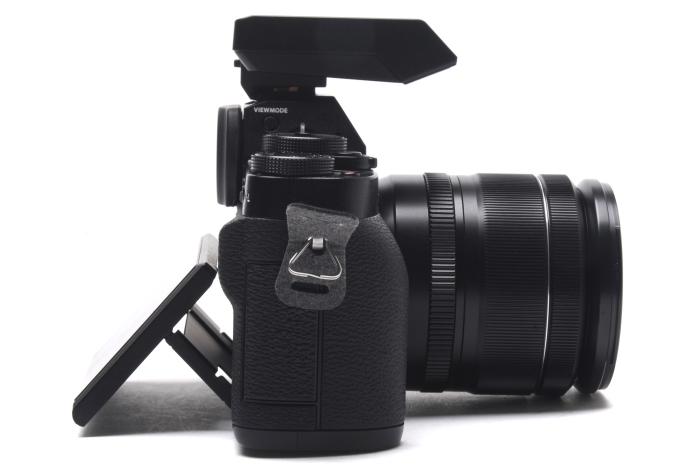
One of the things we love about this camera is that what you see on the screen and through the EVF is what you get when you take the picture. It's also one of the best EVFs we've seen this side of a digital SLR. It's large, detailed, and comfortable to rest against. It can’t be understated how great it is to have a large EVF that shows you exactly what's going on in your scene; you can see instantly what effects your shutter, aperture and ISO changes have on the scene without having to take a photo first and then playing it back.
Furthermore, both the screen and the EVF are tack-sharp, allowing you to use manual focus with good success. There is a focus peaking feature that can be enabled so that the in-focus elements of your shot are immediately visible via a shimmering outline, and there is also a focus assist feature that can be enabled so that you can see an enlarged part of the scene that you want to be in focus. You can change focus mode by moving the 3-way switch at the front of the camera — which can be easy to overlook at first — and it allows you to choose from single, continuous, and manual.
We have no problems with the overall image quality produced by this camera, and think it's easily capable of rivalling a high-quality digital SLR. Images are clear and vibrant when processed by the camera's default JPEG settings, though you do of course have the ability to shoot in RAW mode for post processing on a computer. Film grain filters are plentiful in this camera, and these can be used to introduce a different dynamic to your images.
Fujifilm has removed the high bypass filter from the camera, which is traditionally a filter that counters moire patterning, but also a filter that can make a picture look soft. Fujifilm says that the sharpness of images can be improved when light doesn't pass through this filter, and that it has countered moire patterning by using a random pixel array in the camera's X-Trans CMOS sensor.
It's also a fast camera. Using a SanDisk Extreme Pro SDHC card with a rating of 280 megabytes per second (MBps), we were able to fire off 6 frames per second in high-speed continuous mode, with the camera slowing down after four seconds. This was in JPEG mode and each photo consumed 4MB of data. There was only a couple of seconds of waiting after the last shot for all of that data to be written to the fast SanDisk card and we didn't notice a delay in writing for up to 150 shots (it could do more, too, but we just decided to stop at 150). When we used an SD card with a mainstream write rate, the camera was more erratic in its speed over the same burst periods, and took noticeably longer to write data from its buffer to the card. However, we were still able to continue using the camera while this happened in the background.
Wi-Fi needs to be improved
Like most new cameras, the Fujifilm also features built-in Wi-Fi. It wasn't as easy as we thought it would be to set up and use, mainly because the instructions for it are vague as far as what apps you need to download on your phone and how you can make the direct connection between your devices. We ended up downloading the FujiFilm Camera App, which is the app that allows you to transfer files from the camera to the phone, or to geotag photos. We didn't have any luck connecting to the camera though this app.
We also downloaded the Fujifilm Camera Remote app, which is the one that allows you to use your smartphone's screen as the viewfinder for the camera. We were able to get this app to connect to the camera, and it then showed us a live view of our scene and allowed us to change settings such as the shutter speed, ISO, and film simulation mode. This is a feature we like because it allows us to position the camera in unique ways and also to get in front of it for better control of selfies.
Should you buy it?
Our overall experience with this camera was a positive one and we think it's a great piece of kit. We're happy to recommend it to anyone who favours tactile, labelled controls over screens and menu systems (though you can still use the screen and menu on this if you wish), but the cost is the main issue. Equivalent pricing ($2000) can get you a fairly substantial Canon EOS digital SLR kit, such as an EOS 70D with a couple of lenses.
But that sort of camera might not give you the same level of satisfaction as the X-T1. The X-T1 is more interesting due to its body size, excellent image performance, and in-your-face features. It's an elegant camera that people will look at and then proceed to ask you questions about it. It definitely stands out in such a crowded marketplace and, to us at least, this means that Fujifilm is onto a good thing.
Sample images
All of these JPEGs are straight out of the camera unless otherwise specified.




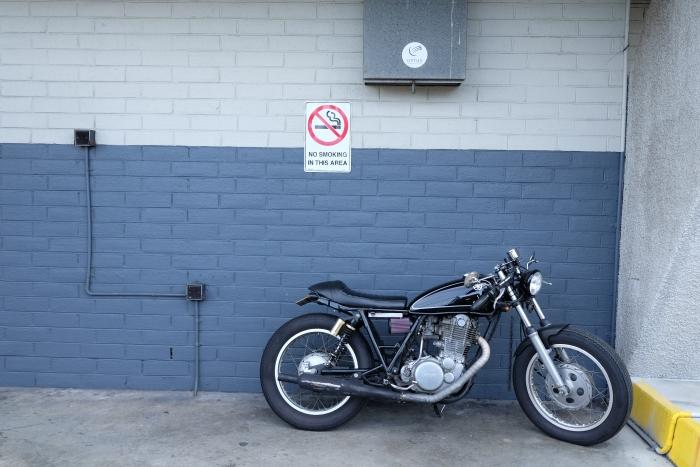
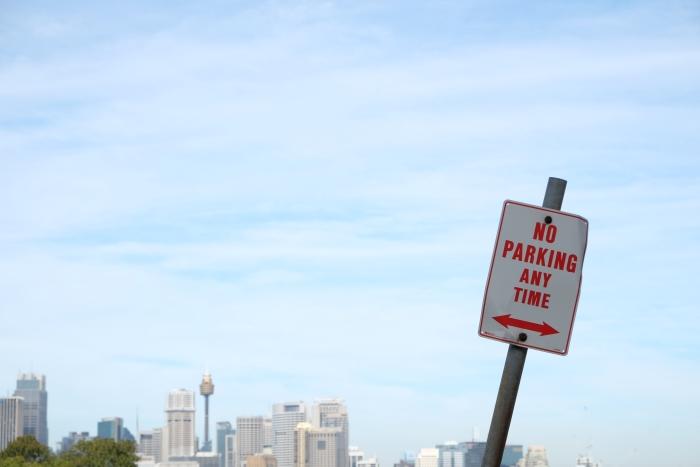


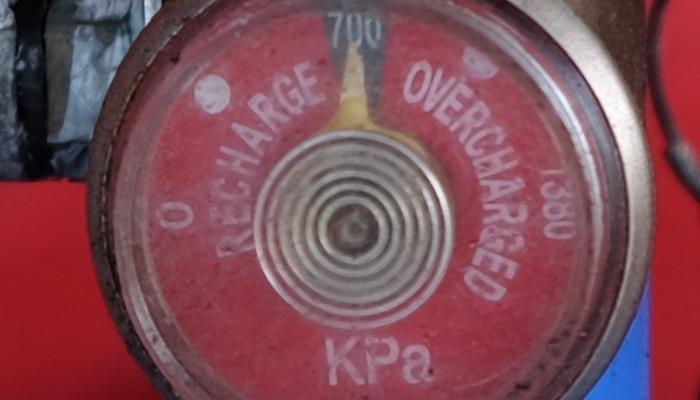
Brand Post

Most Popular Reviews
- 1 Dell U3223QE review: A winning debut for an IPS Black monitor
- 2 HP Spectre x360 16 review: The right 2-in-1 at the wrong time
- 3 Acer K242HYL review: An affordable monitor for any occasion
- 4 GeForce Now review: You bring the games, Nvidia streams the hardware
- 5 Asus ProArt PA279CV monitor review: The go-to for content creators on a budget
Latest News Articles
- Apple offers 6 months free Apple Music, Keynote holiday greeting card templates
- Adobe expands Creative Cloud M1 support, claims over 80% better performance than Intel
- GoPro delivers Quik solution for videos and photos
- Got a GoPro Hero 8? You can use it as a webcam for your Mac
- Canon embolden mirrorless offering with EOS R5 and R6
Resources
Macworld
What's new, plus best mac-related tips
and tricks

Business Centre
The latest business news, reviews, features and whitepapers

Videos
Watch our video news and reviews from around the world

Guides
Comprehensive buying guides, features, and step-by-step articles

PCW Evaluation Team
Pedro Peixoto
Aruba Instant On AP11D

Set up is effortless.
Cate Bacon
Aruba Instant On AP11D

The strength of the Aruba Instant On AP11D is that the design and feature set support the modern, flexible, and mobile way of working.
Dr Prabigya Shiwakoti
Aruba Instant On AP11D

Aruba backs the AP11D up with a two-year warranty and 24/7 phone support.
Tom Pope
Dynabook Portégé X30L-G

Ultimately this laptop has achieved everything I would hope for in a laptop for work, while fitting that into a form factor and weight that is remarkable.
Tom Sellers
MSI P65

This smart laptop was enjoyable to use and great to work on – creating content was super simple.
Lolita Wang
MSI GT76

It really doesn’t get more “gaming laptop” than this.
Featured Content
- Which Lenovo Laptop Should I Buy?
- Every TV in Samsung's 2022 line-up: OLED, Neo QLED and more!
- Top 10 best Android and Apple phones for under $600
- Everything you need to know about Smart TVs
- What's the difference between an Intel Core i3, i5 and i7?
- Laser vs. inkjet printers: which is better?










